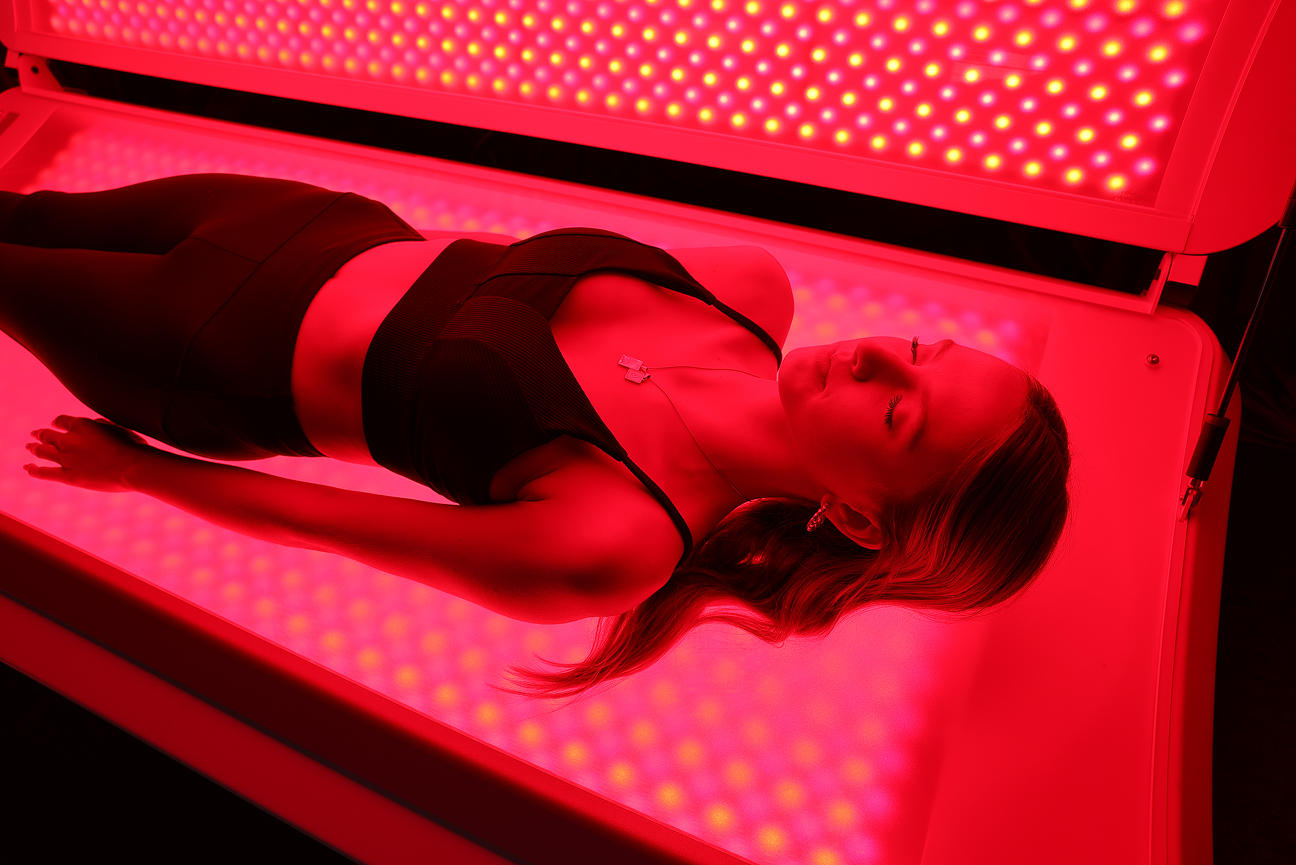- Linkedin Share
- Twitter Tweet
- Email Share
- Copy link Copy link Copied to clipboard
Emerging in sports recovery and performance enhancement is red light therapy (RLT). Different types of light affect the body in various ways, but red and near-infrared light stand out for their ability to enhance muscle recovery and performance. While blue light regulates alertness and UV light aids in vitamin D production, red light penetrates deep into tissues, stimulating cellular energy production and reducing inflammation—both crucial for athletes looking to train harder and recover faster.
How Red Light Therapy Supports Post-Training Recovery and Performance
Red light therapy works by delivering specific wavelengths of red and near-infrared (NIR) light deep into muscle tissue. These wavelengths stimulate the mitochondria, the energy-producing centres of cells, leading to increased production of adenosine triphosphate (ATP). Since ATP is essential for muscle repair, endurance and strength, boosting its production helps the body recover more efficiently and perform at a higher level.
By improving cellular function, reducing oxidative stress, and increasing circulation, RLT can significantly enhance the body’s natural recovery and training adaptations, making it an excellent tool for athletes looking to optimise performance and minimise downtime.
Key Benefits of Red Light Therapy for Recovery and Performance
- Reduces Muscle Soreness and Fatigue
After a tough workout, delayed onset muscle soreness (DOMS) can slow down progress and impact subsequent training sessions. Red light therapy has been shown to reduce muscle soreness by decreasing inflammation and oxidative stress in muscle tissue. This allows athletes to recover more quickly and get back to training sooner.
- Decreases Inflammation and Enhances Circulation
Intense training can lead to inflammation, which, while necessary for muscle adaptation, can also slow recovery and cause discomfort. RLT has been shown to reduce pro-inflammatory cytokines while increasing circulation, allowing oxygen and nutrients to reach damaged tissues more efficiently. Improved blood flow means faster healing, reduced muscle stiffness, and enhanced endurance for future workouts.
- Accelerates Muscle Repair and Tissue Healing
Muscle repair is a crucial part of the recovery process. By increasing ATP production and reducing oxidative damage, red light therapy helps muscle fibres heal more quickly. This is particularly beneficial for strength athletes and endurance runners who put significant strain on their muscles during training. Faster recovery translates to more frequent and intense training sessions, ultimately improving performance.
- Enhances Strength and Power Output
Studies suggest that red light therapy can improve muscle endurance and strength by promoting cellular efficiency and reducing muscle fatigue. By optimising mitochondrial function, athletes may experience increased power output, greater resistance to fatigue and improved overall performance in both endurance and strength-based activities.
- Supports Joint and Tendon Health
Recovery isn’t just about muscles—tendons and joints also experience stress from repeated movements and heavy loads. RLT has been shown to help reduce joint pain and stiffness while promoting collagen production, which is essential for maintaining strong tendons and ligaments. Athletes recovering from minor injuries or overuse strains may find red light therapy helpful in reducing discomfort and improving mobility.
- Enhances Sleep Quality for Better Recovery
Sleep plays a vital role in muscle recovery and overall athletic performance. Red light therapy has been linked to improved sleep quality by helping regulate melatonin production and supporting the body’s natural circadian rhythms. Deeper, more restorative sleep allows for better muscle repair, hormonal balance and cognitive function, all of which contribute to peak athletic performance.
How to Incorporate Red Light Therapy into Your Training Routine
To maximise the benefits of red light therapy, athletes should incorporate it into both their training and recovery routines. Most research suggests using RLT devices for 10–20 minutes per session, 3–5 times per week. Sessions can be done post-workout to reduce inflammation and soreness or before training to prime the muscles for exercise and improve endurance. Explore Red Light Therapy treatments available at Third Space Recovery Spa.



